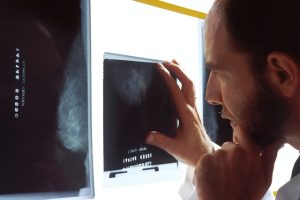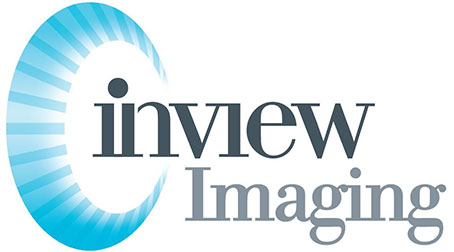Preparing for a mammogram can seem daunting, but with the right approach, it can be a straightforward process. While it may cause some discomfort, the benefits of early detection far outweigh any temporary unease. By understanding what to expect and how to prepare adequately, you can ensure a smoother experience. From knowing when to schedule your appointment to avoiding certain products beforehand, these steps can make a significant difference in your comfort level during the procedure. Embrace the opportunity to prioritize your health and well-being by taking proactive steps towards early detection through proper preparation.
Key Takeaways
-
Schedule Regular Mammograms: Make sure to schedule and attend regular mammograms as they are crucial for early detection of breast cancer.
-
Prepare in Advance: Prior to your appointment, familiarize yourself with the preparation steps and what to expect during the mammogram.
-
Pack Essentials: Remember to bring your ID, insurance information, any prior mammogram images, and a list of medications to your appointment.
-
Communicate Clearly: Effective communication with your technologist about any concerns or questions can help ensure a smooth and comfortable experience.
-
Follow Dietary Guidelines: Adhering to specific dietary guidelines, such as avoiding caffeine before the procedure, can enhance the accuracy of your mammogram results.
-
Manage Discomfort: Utilize pain management tips like applying a warm cloth to the breasts before the procedure to help alleviate any discomfort.
Importance of Mammograms
Early Detection Benefits
Early detection significantly increases treatment success rates. Regular mammograms identify abnormalities before symptoms appear. Early detection leads to less aggressive treatment options.
Frequency Recommendations
Guidelines suggest annual mammograms for women over 40. Consult your healthcare provider about personal risk factors altering frequency. Stay informed about changes in recommendations based on age and health history.
Types of Mammograms
Screening and diagnostic mammograms differ in purpose. Screening mammograms are routine checks, while diagnostic ones focus on specific concerns. Advanced techniques like 3D mammography offer better accuracy.
Scheduling Your Mammogram

Best Time to Schedule
-
Choose a time post-menstruation when breasts are less tender.
-
Avoid hormonal fluctuations that may cause discomfort during scheduling.
-
Consider personal schedules to minimize stress on the appointment day.
Choosing a Facility
-
Research specialized mammogram facilities with experienced staff.
-
Check reviews and ratings for high-quality care and comfort assurance.
-
Verify accreditation and adherence to safety standards at the facility.
Insurance and Costs
-
Confirm insurance coverage for mammograms and understand out-of-pocket costs.
-
Inquire about payment plans or financial aid options if uninsured.
-
Monitor changes in insurance policies that may impact coverage.
Preparing for the Appointment
What to Wear
When preparing for a mammogram, choose comfortable clothing that allows easy access to the upper body. Opt for a two-piece outfit to enable quick removal of the top, facilitating the screening process. Avoid complicated attire that could slow down or complicate the examination.
Avoiding Deodorants
Refrain from using deodorants or antiperspirants on the day of the exam to prevent any interference with imaging. Understand that certain products can leave residues that may affect the accuracy of mammogram results. Plan to apply these products after the procedure to maintain hygiene and comfort.
Personal Grooming Tips
Maintain personal grooming standards but avoid excessive lotions or creams that could impact the exam’s quality. Ensure nails are trimmed and refrain from wearing jewelry that might need to be removed during the screening. Style your hair comfortably to prevent any distractions during the procedure.
What to Bring
Necessary Documents
When preparing for a mammogram, ensure to bring identification and insurance information to your appointment. Compile any referral letters or previous medical records related to breast health. It’s crucial to keep a list of questions or concerns handy for discussion with the healthcare provider.
Previous Mammogram Records
Request copies of past mammogram results to provide context for new images. If switching locations, bring records from other facilities for comprehensive care. Discuss any significant findings from previous exams with your provider for better evaluation.
List of Medications
Create a complete list of medications, including prescriptions and over-the-counter drugs, for your appointment. Share this list with your healthcare provider to assess any potential impacts on breast health. Remember to update the list regularly to reflect any changes in medication.
Communicating with Your Technologist
Share Health History
When discussing your health history, disclose any family history of breast cancer or genetic predispositions to your provider. Mention personal health conditions that may affect breast cancer risk. Be open about lifestyle factors like smoking or alcohol consumption.
Discuss Breast Changes
Report any recent changes in breast appearance or texture to your healthcare provider. Mention any unusual symptoms, such as pain or discharge, prior to the exam. Keep an ongoing dialogue with your provider about breast health concerns.
Ask Questions
Prepare a list of questions regarding the mammogram process and what to expect. Inquire about the facility’s protocols and any specific concerns you may have. Seek clarification on any medical terms or procedures discussed during the appointment.
Dietary Guidelines
Eating Before the Test
Before undergoing a mammogram, check if there are any dietary restrictions provided by the healthcare facility. Avoid heavy meals that could lead to discomfort during the procedure. Opt for light snacks if necessary to maintain energy levels without feeling bloated.
Drinking Water
Stay hydrated before your mammogram appointment, but refrain from excessive fluid intake immediately before the exam. Hydration can contribute to overall comfort during the procedure. Adhere to any specific instructions from the facility regarding water consumption.
Avoiding Caffeine
In the days leading up to your mammogram, limit your caffeine intake to help reduce breast tenderness. Recognize that caffeine may worsen sensitivity in certain individuals. Consider switching to herbal teas or decaffeinated alternatives before the exam.
Pain Management Tips
Over-the-Counter Medication
-
Consult your healthcare provider for advice on pain relievers before the mammogram.
-
Avoid medications that may increase blood thinning or sensitivity risks.
-
Follow specific recommendations provided by your healthcare provider regarding medication use.
Timing Around Menstrual Cycle
-
Schedule the mammogram post-menstrual period for optimal comfort during the exam.
-
Understand hormonal changes’ impact on breast sensitivity and discomfort levels.
-
Keep track of your cycle to effectively plan future mammogram appointments.
Relaxation Techniques
-
Practice deep breathing exercises to alleviate anxiety before the mammogram.
-
Utilize visualization techniques to create a calming mental space during the procedure.
-
Consider bringing a stress ball or fidget item to help ease nerves during the exam.
During the Procedure
Interaction with Technologist
-
Communicate openly with the technologist to address any concerns or discomfort during the diagnosis.
-
Ask for clarification on each step of the procedure to ensure you understand what will happen.
-
Establish a good rapport with the technologist to create a more comfortable environment during the mammogram.
Physical Experience
-
Prepare yourself for the sensation of breast compression, which might be uncomfortable but is crucial for accurate imaging.
-
Understand that while it may feel uncomfortable, the procedure itself is short and will be over quickly.
-
Some women may experience anxiety due to the nature of the exam, so it’s important to stay calm and focused.
Duration of the Test
-
Expect the entire mammogram process to take approximately 30 minutes, including preparation and imaging.
-
Realize that the actual time for imaging is brief, usually just a few seconds per view taken.
-
Plan your schedule accordingly, considering travel time and potential waiting periods at the facility.
After the Mammogram
Immediate Aftercare
After completing the mammogram, you can resume your regular activities immediately. If you experience any prolonged pain or discomfort post-exam, it’s crucial to monitor these symptoms closely. Don’t hesitate to raise any concerns or queries with the technologist or your healthcare provider right away.
When to Expect Results
When it comes to receiving your mammogram results, expect them within around a week. Some facilities may even provide same-day results for routine screening mammograms. Be mentally prepared for potential follow-up appointments if further imaging is necessary for a comprehensive evaluation.
Understanding Results
Once you have your results, schedule a session with your healthcare provider to go over them in detail. Seek clarification on any findings that might be unclear and inquire about the implications of these results. It’s beneficial to maintain a personal record of your mammogram results for future comparisons and reference.
Closing Thoughts
In preparing for your mammogram, remember that taking care of your health is a proactive step towards early detection and peace of mind. By following the guidelines outlined, you are empowering yourself with knowledge and readiness for the procedure. Remember, your well-being is paramount, so don’t hesitate to ask questions or seek clarification during any step of the process.
Taking charge of your health journey starts with these preparations. Book your mammogram, gather your essentials, and approach the appointment with confidence. Your commitment to this preventive measure is a testament to your dedication to staying healthy. Stay informed, stay vigilant, and prioritize your well-being. Your future self will thank you.
Frequently Asked Questions
How important are mammograms for breast health?
Mammograms are crucial for early detection of breast cancer. They can detect abnormalities before symptoms appear, increasing chances of successful treatment. Regular screenings help in identifying issues at an early stage when treatment is most effective.
Is scheduling a mammogram appointment necessary?
Yes, scheduling a mammogram appointment is essential. Early detection through regular screenings can significantly increase the chances of successful treatment if any abnormalities are found.
What should I bring to my mammogram appointment?
For your mammogram appointment, remember to bring your ID, insurance information, any previous mammogram images if applicable, and a list of any symptoms or concerns you may have regarding your breast health.
How should I communicate with the technologist during the mammogram?
It’s important to communicate openly with your technologist. Inform them about any discomfort or pain during the procedure. Clear communication ensures that the technologist can adjust positioning or technique as needed to make you more comfortable.
Are there dietary guidelines to follow before a mammogram?
Before a mammogram, it’s recommended to avoid using deodorants, lotions, or powders on your chest area. These products can interfere with the imaging process and may lead to inaccurate results. It’s best to follow the specific guidelines provided by the healthcare facility.


